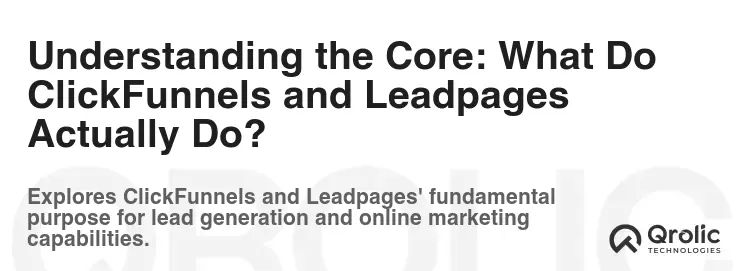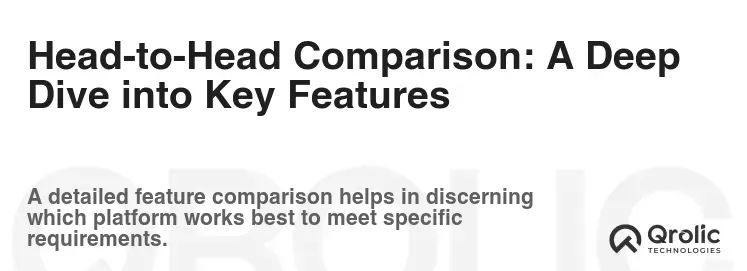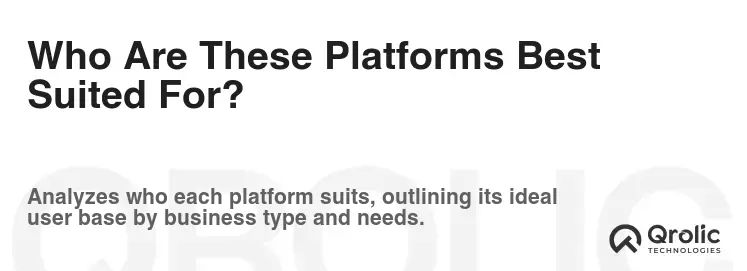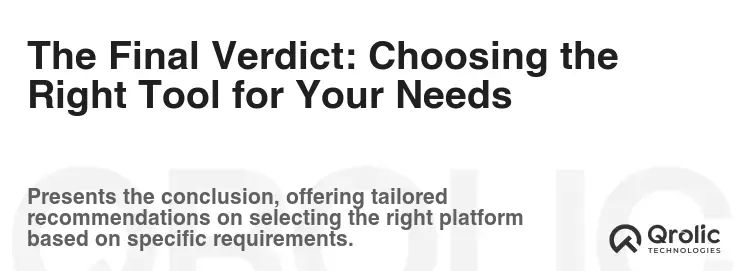Choosing the right tool for lead generation can feel like navigating a minefield. You’re bombarded with options, each promising the best results. Two names that consistently pop up in the conversation are ClickFunnels and Leadpages. They both offer powerful features to help you capture leads and convert them into paying customers, but they approach the problem from different angles. This article dives deep into a head-to-head comparison of ClickFunnels vs Leadpages, exploring their strengths, weaknesses, pricing, and ideal use cases, ultimately helping you decide which platform is the best fit for your business and your lead generation strategy.
Quick Summary:
- ClickFunnels builds entire sales funnels.
- Leadpages excels at simple lead capture.
- Choose based on your business needs and budget.
- Success needs strategy, not just the tool.
Table of Contents
- Understanding the Core: What Do ClickFunnels and Leadpages Actually Do?
- ClickFunnels: The All-in-One Marketing Powerhouse
- Leadpages: The Landing Page and Lead Capture Specialist
- Head-to-Head Comparison: A Deep Dive into Key Features
- 1. Landing Page Builder: Design Flexibility and Ease of Use
- 2. Funnel Building Capabilities: From Lead Capture to Conversion
- 3. Lead Capture Forms: Optimizing for Maximum Conversion
- 4. Email Marketing Automation: Nurturing Leads and Driving Sales
- 5. A/B Testing: Optimizing for Peak Performance
- 6. Integrations: Connecting with Your Existing Tools
- 7. Pricing: Understanding the Cost of Lead Generation
- 8. Customer Support: Getting the Help You Need
- Who Are These Platforms Best Suited For?
- ClickFunnels: The Ideal User
- Leadpages: The Ideal User
- Real-World Examples: Putting Theory into Practice
- The Final Verdict: Choosing the Right Tool for Your Needs
- Bonus: Optimizing Your Lead Generation Strategy Beyond the Platform
- Qrolic Technologies: Your Partner in Digital Growth
- Beyond Lead Generation: Thinking Long-Term
Understanding the Core: What Do ClickFunnels and Leadpages Actually Do?

Before we jump into a feature-by-feature battle, let’s define what these platforms actually are and what problems they solve.
ClickFunnels: The All-in-One Marketing Powerhouse
ClickFunnels is more than just a landing page builder; it’s an all-in-one marketing platform designed to guide customers through an entire sales funnel. Think of it as building a custom-designed, optimized journey for your leads, from initial contact to final purchase. It focuses heavily on creating sales funnels, which are automated sequences of pages designed to convert visitors into customers.
Key Features of ClickFunnels:
- Funnel Builder: A drag-and-drop interface for creating complete sales funnels, including landing pages, order forms, upsell pages, and thank you pages.
- Landing Page Builder: Customizable templates and a visual editor to create high-converting landing pages.
- Email Marketing Automation (Follow-Up Funnels): Built-in email marketing capabilities to nurture leads and follow up with customers.
- Membership Site Creation: Tools to create and manage membership sites for delivering premium content.
- Affiliate Management: A system for managing and tracking affiliate programs.
- A/B Testing: Features to test different variations of your pages and funnels to optimize for conversions.
- Payment Gateway Integration: Seamless integration with various payment processors like Stripe and PayPal.
- CRM Functionality: Basic CRM features for managing customer interactions.
The “Why” Behind ClickFunnels:
ClickFunnels aims to simplify the online sales process by providing a centralized platform for building, managing, and automating your entire sales funnel. It’s designed for businesses that want a comprehensive solution for generating leads, selling products or services, and building customer relationships, all within a single ecosystem. It empowers you to build entire online business, including payment processing, affiliate management, and email marketing, without juggling multiple platforms.
Leadpages: The Landing Page and Lead Capture Specialist
Leadpages, on the other hand, focuses primarily on lead capture and conversion. It’s a powerful landing page builder designed to help you create high-converting landing pages, pop-up forms, and alert bars. While it integrates with other marketing tools, its core strength lies in its ability to generate leads quickly and efficiently.
Key Features of Leadpages:
- Landing Page Builder: A user-friendly drag-and-drop interface with a wide variety of professionally designed templates optimized for conversions.
- Pop-Up Forms (Leadboxes): Customizable pop-up forms that can be triggered by time, exit intent, or clicks.
- Alert Bars (Leadbars): Non-intrusive bars at the top or bottom of your website to capture attention and generate leads.
- A/B Testing: Tools to test different versions of your landing pages and pop-ups to improve performance.
- Lead Magnet Delivery: Automated delivery of lead magnets (e.g., ebooks, checklists) to subscribers.
- Integration with Marketing Tools: Integrations with popular email marketing platforms, CRMs, and other marketing tools.
- Website Builder (Limited): Basic website building functionality, but primarily focused on landing pages.
- Real-Time Analytics: Detailed analytics to track your landing page performance and identify areas for improvement.
The “Why” Behind Leadpages:
Leadpages is designed for businesses that want to quickly and easily create high-converting landing pages and lead capture forms. It’s ideal for marketers who want a specialized tool for generating leads and don’t necessarily need the all-in-one functionality of ClickFunnels. The platform excels at providing optimized templates and an intuitive interface that makes it simple to launch lead generation campaigns, even without extensive technical skills. It’s the tool of choice for marketers who prefer a focused solution dedicated to perfecting the art of lead capture.
Head-to-Head Comparison: A Deep Dive into Key Features

Now that we understand the fundamental differences, let’s compare ClickFunnels and Leadpages across key features that are crucial for effective lead generation:
1. Landing Page Builder: Design Flexibility and Ease of Use
-
ClickFunnels: ClickFunnels offers a robust drag-and-drop editor that allows for pixel-perfect customization. You have complete control over the design and layout of your landing pages. While this flexibility is a major advantage, it can also lead to a steeper learning curve, especially for beginners. The templates are geared towards specific funnel types (e.g., sales pages, webinar registration pages), which can be both helpful and limiting.
-
Leadpages: Leadpages shines in its ease of use and pre-designed templates. The drag-and-drop editor is incredibly intuitive, and the templates are professionally designed and optimized for conversions. While you have less granular control over the design compared to ClickFunnels, the focus on usability and pre-optimized templates makes it easier to create high-converting landing pages quickly. Leadpages uses conversion-focused templates which are sorted based on conversion rate.
Verdict: Leadpages wins for ease of use and speed of implementation. ClickFunnels wins for design flexibility and complete customization. The best choice depends on your technical skills and design preferences. If you value speed and simplicity, Leadpages is the better option. If you need complete control over the design and are willing to invest the time to learn the platform, ClickFunnels is a powerful choice.
2. Funnel Building Capabilities: From Lead Capture to Conversion
-
ClickFunnels: This is where ClickFunnels truly excels. It provides a complete funnel building experience, allowing you to create complex sales funnels with multiple steps, including landing pages, order forms, upsells, and thank you pages. The visual funnel builder makes it easy to map out your customer journey and automate the entire process. ClickFunnels gives you the ability to create very complex funnels with upsells, downsells and order bumps.
-
Leadpages: Leadpages focuses primarily on lead capture and doesn’t offer the same comprehensive funnel building capabilities as ClickFunnels. While you can create a series of connected landing pages, it lacks the visual funnel builder and automation features of ClickFunnels. You’ll need to integrate Leadpages with other tools (e.g., email marketing platforms, CRMs) to build a complete sales funnel.
Verdict: ClickFunnels is the clear winner for funnel building. If you need to create complex sales funnels and automate the entire customer journey, ClickFunnels is the superior choice. Leadpages is suitable if you only need to create landing pages and integrate them with other tools.
3. Lead Capture Forms: Optimizing for Maximum Conversion
-
ClickFunnels: ClickFunnels allows you to create basic lead capture forms directly within your landing pages. You can customize the form fields and integrate them with your email marketing platform. However, the form building capabilities are not as advanced as those offered by Leadpages.
-
Leadpages: Leadpages offers a robust suite of lead capture tools, including pop-up forms (Leadboxes) and alert bars (Leadbars). These tools are highly customizable and can be triggered based on various user behaviors, such as time on page, exit intent, or clicks. Leadpages excels at creating high-converting lead capture forms that integrate seamlessly with your landing pages.
Verdict: Leadpages wins for lead capture forms. The Leadboxes and Leadbars features provide a more versatile and effective way to capture leads compared to ClickFunnels’ basic form building capabilities. Leadpages is focused on maximizing conversions.
4. Email Marketing Automation: Nurturing Leads and Driving Sales
-
ClickFunnels: ClickFunnels offers built-in email marketing automation through its “Follow-Up Funnels” feature. This allows you to send automated email sequences to your leads and customers based on their behavior and actions within your funnels. While it’s a convenient feature, it’s not as powerful or flexible as dedicated email marketing platforms like Mailchimp or ActiveCampaign.
-
Leadpages: Leadpages relies on integrations with third-party email marketing platforms. You can easily connect your Leadpages account with popular email marketing services like Mailchimp, AWeber, and ConvertKit. While this requires you to use a separate tool for email marketing, it also gives you more flexibility and control over your email campaigns.
Verdict: It depends on your needs. If you want an all-in-one solution with basic email marketing automation, ClickFunnels might be sufficient. However, if you need advanced email marketing features and prefer to use a dedicated platform, Leadpages with an integration is the better choice. For robust email marketing automation, specialized platforms like Mailchimp, ActiveCampaign or Klaviyo are a better long-term solution.
5. A/B Testing: Optimizing for Peak Performance
-
ClickFunnels: ClickFunnels offers A/B testing features that allow you to test different versions of your landing pages and funnels to optimize for conversions. You can test different headlines, images, copy, and other elements to see which variations perform best.
-
Leadpages: Leadpages also provides A/B testing capabilities for your landing pages and pop-up forms. The A/B testing feature is easy to use and allows you to quickly identify the most effective versions of your pages.
Verdict: Both platforms offer solid A/B testing capabilities. The functionality is comparable, and both platforms provide the data you need to optimize your pages for maximum conversions. The difference is negligible, making this a tie.
6. Integrations: Connecting with Your Existing Tools
-
ClickFunnels: ClickFunnels integrates with a wide range of third-party tools, including email marketing platforms, CRMs, payment processors, and other marketing tools. However, the integration process can sometimes be complex and require technical expertise.
-
Leadpages: Leadpages offers seamless integrations with many popular marketing tools, including email marketing platforms, CRMs, and webinar platforms. The integration process is generally straightforward and easy to set up. Leadpages has a reputation for easy integrations.
Verdict: Leadpages wins for ease of integration. While ClickFunnels offers a wide range of integrations, the process can be more complex. Leadpages simplifies the integration process, making it easier to connect your Leadpages account with your existing tools.
7. Pricing: Understanding the Cost of Lead Generation
-
ClickFunnels: ClickFunnels offers different pricing plans, with the most basic plan starting at a higher price point than Leadpages. The higher-tier plans include more features and functionality, such as unlimited funnels, email marketing automation, and affiliate management.
-
Leadpages: Leadpages offers more affordable pricing plans, making it a more accessible option for small businesses and startups. The plans vary based on the number of landing pages, lead capture forms, and other features.
Verdict: Leadpages is the more affordable option, especially for businesses that are just starting out or have a limited budget. ClickFunnels offers more features and functionality but comes at a higher price. Your choice depends on your budget and the features you need.
8. Customer Support: Getting the Help You Need
-
ClickFunnels: ClickFunnels offers customer support through email, live chat, and a comprehensive knowledge base. However, some users have reported that the customer support can be slow to respond and not always helpful.
-
Leadpages: Leadpages provides customer support through email, live chat, and a detailed knowledge base. Leadpages is known for its responsive and helpful customer support team.
Verdict: Leadpages wins for customer support. While both platforms offer support resources, Leadpages has a reputation for providing more responsive and helpful support.
Who Are These Platforms Best Suited For?

Now that we’ve dissected the features, let’s consider which type of user benefits most from each platform.
ClickFunnels: The Ideal User
- Entrepreneurs and Businesses Selling Products or Services Online: ClickFunnels is perfect for businesses that need to create complete sales funnels to guide customers through the buying process.
- Marketing Agencies: Agencies can use ClickFunnels to build and manage funnels for their clients, offering a comprehensive marketing solution.
- Those Who Need an All-in-One Solution: If you want a platform that combines landing page building, email marketing automation, and funnel management, ClickFunnels is a strong contender.
- Users Willing to Invest Time in Learning the Platform: The learning curve can be steep, so it’s best for those who are willing to dedicate time to mastering the platform.
Leadpages: The Ideal User
- Small Businesses and Startups: Leadpages is an affordable and easy-to-use option for businesses that are just starting out and need to generate leads quickly.
- Marketers Focused on Lead Generation: If your primary goal is to generate leads through landing pages and lead capture forms, Leadpages is an excellent choice.
- Businesses That Already Have an Email Marketing Platform: If you already use an email marketing platform and don’t need built-in email automation, Leadpages is a cost-effective solution.
- Users Who Value Simplicity and Ease of Use: The intuitive interface and pre-designed templates make Leadpages a breeze to use, even for beginners.
Real-World Examples: Putting Theory into Practice

To further illustrate the differences, let’s look at some real-world examples of how ClickFunnels and Leadpages can be used:
ClickFunnels Example: Selling an Online Course
- Landing Page: Create a landing page with a compelling headline and video showcasing the benefits of the course.
- Order Form: Design an order form with multiple payment options and upsell opportunities (e.g., a premium version of the course, access to a private community).
- Upsell Page: Offer an additional product or service that complements the course (e.g., one-on-one coaching sessions).
- Thank You Page: Thank the customer for their purchase and provide instructions on how to access the course.
- Email Follow-Up: Send automated email sequences to onboard new students, provide support, and promote additional courses.
Leadpages Example: Building an Email List for a Blog
- Landing Page: Create a landing page offering a free ebook or checklist in exchange for an email address.
- Pop-Up Form (Leadbox): Display a pop-up form on your blog offering the same freebie.
- Alert Bar (Leadbar): Place an alert bar at the top of your blog promoting the free ebook and encouraging visitors to subscribe.
- Thank You Page: Redirect subscribers to a thank you page with a call to action (e.g., follow you on social media, read your latest blog post).
- Integration with Email Marketing Platform: Automatically add new subscribers to your email list and send them a welcome email.
The Final Verdict: Choosing the Right Tool for Your Needs

So, which platform is best for lead generation? The answer, as you might have guessed, depends on your specific needs and goals.
Choose ClickFunnels If:
- You need an all-in-one solution for building complete sales funnels.
- You want complete control over the design and customization of your pages.
- You need built-in email marketing automation.
- You are willing to invest time in learning the platform.
- You require advanced features like membership site creation and affiliate management.
Choose Leadpages If:
- You need a simple and easy-to-use landing page builder.
- Your primary focus is on lead generation through landing pages and lead capture forms.
- You already have an email marketing platform.
- You want an affordable solution for creating high-converting landing pages.
- You value ease of integration with other marketing tools.
Ultimately, the best way to decide is to take advantage of the free trials offered by both platforms. Experiment with the features, build a few landing pages, and see which platform feels like the best fit for your business.
Bonus: Optimizing Your Lead Generation Strategy Beyond the Platform

Choosing the right platform is only half the battle. To truly maximize your lead generation efforts, you need a solid strategy in place. Here are some tips to help you get the most out of ClickFunnels or Leadpages:
- Define Your Target Audience: Before you start building landing pages, clearly define your target audience. Who are you trying to reach? What are their pain points? What are their goals? Understanding your audience will help you create landing pages that resonate with them.
- Offer a Compelling Lead Magnet: A lead magnet is a valuable resource that you offer in exchange for an email address. Examples include ebooks, checklists, templates, and free trials. Make sure your lead magnet is relevant to your target audience and provides real value.
- Write Compelling Copy: Your landing page copy should be clear, concise, and persuasive. Highlight the benefits of your offer and use strong calls to action.
- Use High-Quality Images and Videos: Visuals can significantly impact your conversion rates. Use high-quality images and videos that are relevant to your offer and capture the attention of your visitors.
- Optimize for Mobile: Ensure your landing pages are mobile-friendly. A significant portion of your traffic will come from mobile devices, so it’s crucial that your pages look good and function properly on all devices.
- Track Your Results and Make Adjustments: Use analytics to track your landing page performance and identify areas for improvement. A/B test different elements of your pages to see what works best and make adjustments accordingly.
- Nurture Your Leads: Don’t just collect email addresses and forget about them. Nurture your leads with valuable content and build relationships with them. This will increase the likelihood that they will eventually become paying customers.
Qrolic Technologies: Your Partner in Digital Growth

At Qrolic Technologies (https://qrolic.com/), we understand the complexities of digital marketing and the challenges businesses face in generating leads and driving sales. We offer a range of services to help you achieve your online goals, including:
- SEO (Search Engine Optimization): We help you improve your website’s ranking in search engine results, driving more organic traffic to your site.
- PPC (Pay-Per-Click) Advertising: We create and manage effective PPC campaigns that target your ideal customers and generate qualified leads.
- Social Media Marketing: We help you build a strong social media presence, engage with your audience, and drive traffic to your website.
- Content Marketing: We create high-quality content that attracts and engages your target audience, establishing you as a thought leader in your industry.
- Website Design and Development: We design and develop user-friendly and mobile-responsive websites that are optimized for conversions.
Whether you choose ClickFunnels or Leadpages, Qrolic Technologies can help you develop a comprehensive digital marketing strategy that maximizes your lead generation efforts and drives sustainable growth. We have the expertise and experience to help you navigate the ever-changing digital landscape and achieve your business objectives. Contact us today to learn more about how we can help you grow your business online.
Beyond Lead Generation: Thinking Long-Term

While lead generation is crucial, it’s important to remember that it’s just one piece of the puzzle. Building a successful online business requires a holistic approach that encompasses:
- Brand Building: Create a strong brand identity that resonates with your target audience.
- Customer Relationship Management (CRM): Build strong relationships with your customers and provide exceptional customer service.
- Content Marketing: Create valuable content that attracts and engages your target audience.
- SEO (Search Engine Optimization): Optimize your website for search engines to drive organic traffic.
- Social Media Marketing: Engage with your audience on social media and build a community around your brand.
By focusing on these key areas, you can create a sustainable and thriving online business that generates leads, converts customers, and builds long-term relationships. Whether you choose ClickFunnels or Leadpages, remember that the platform is just a tool. Your success ultimately depends on your strategy, your execution, and your commitment to providing value to your customers.






